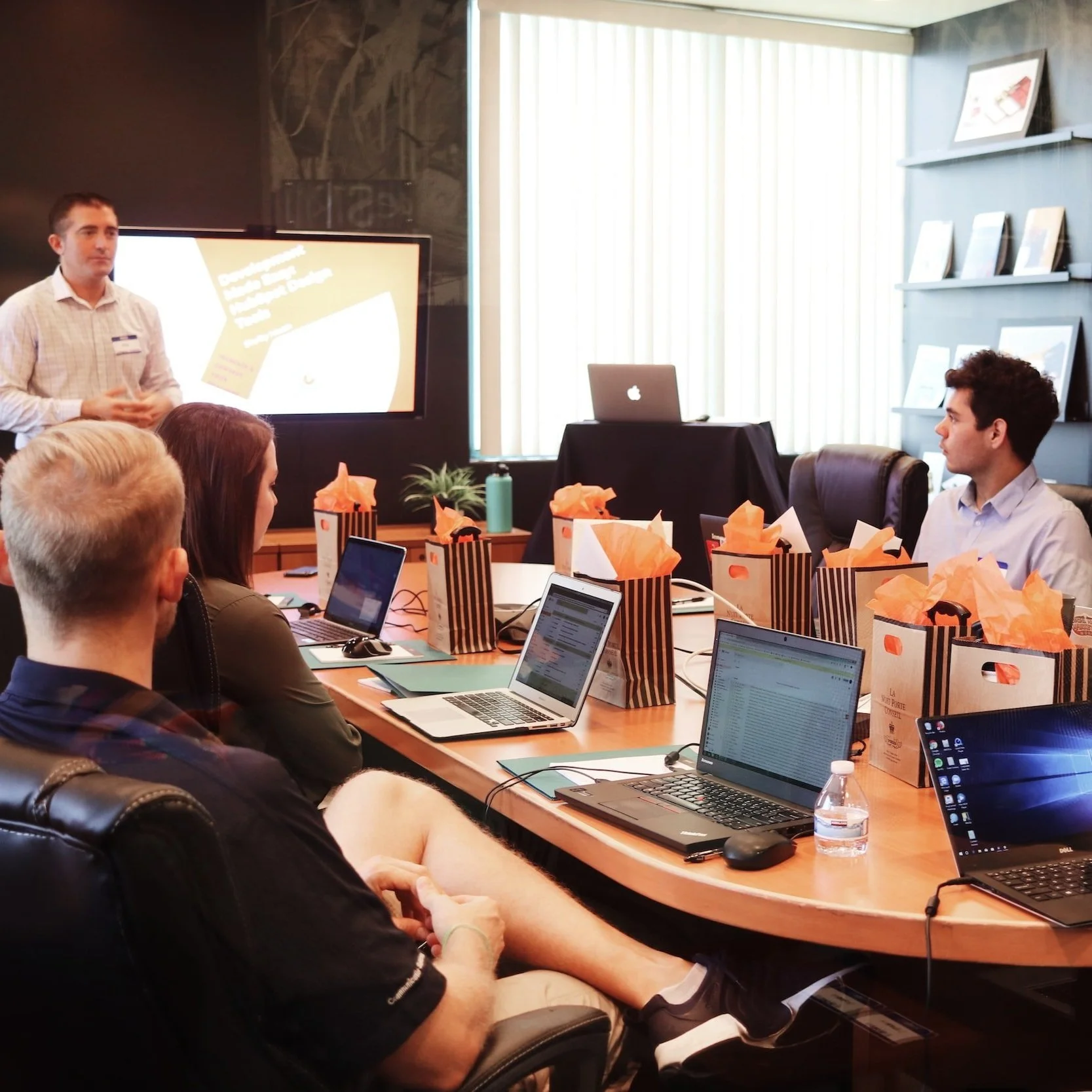Set Up for Success: Five Ways to Support First Gen Professionals in the Workplace
First generation professionals are a unique group, typically with a non-traditional path to the workforce. While this non-traditional path can forge a distinctly useful skillset, there are certain steps employers can implement to leverage this existing skillset, while providing essential workplace resources to which first generation young professionals may not have previous access. In this article, we highlight five ways you can support first generation young professionals in your workplace.
Highlight existing skills
First and foremost, focus on your first gen workforce’s unique perspective and existing skillset, rather than deficiencies.
According to Matt Newlin at the Center for First-Generation Student Success, employers will benefit from an asset-based approach, as opposed to deficiency-based. “An asset-based approach intentionally considers the abilities and knowledge that students carry with them based on their lived experiences . . . This includes things like a students’ resourcefulness, self-reliance, problem-solving, ability to create information networks, optimism, goal-orientation, and experience with formal systems.” (1), citing Dr. Africa Hands (2020). First generation young professionals often bring more of this lived experience into their first roles, initially relying on these abilities over their limited formal corporate experience.
Further, a survey sponsored by the U.S. Census Bureau highlights how this lived experience affects workplace performance:
“When answering questions about the advantages of being an FGP, participants described needing to have a certain amount of grit and determination to achieve the amount of success they have in their careers. They talked about the work ethic instilled in them from their working class parents and how the lack of resources that could have stalled their success also molded them to be hard workers. Several supervisors who worked with FGPs supported this notion, and said many of their FGP employees were especially motivated because they wanted to prove themselves as able despite coming from an underprivileged background.” (2)
One first gen young professional shared their personal experience:
“…We don’t have the same sense…of entitlement that other people have, and it tends to make us…work differently. We tend to do a lot more research and background work because we don’t assume we’re going to be able to walk into a room and be accepted. So we tend to do our homework a little bit more.” (2)
Grit, hardwork, motivation, and a lack of entitlement are a few of the valuable skills that first generation young professionals bring to the workplace. Employers can highlight these, and others, by focusing on skills honed by lived experience, not deficiencies in skills that can be taught with more formal corporate experience.
Onboarding, onboarding, onboarding
In a world of remote and hybrid work, onboarding has become a key factor in employee satisfaction and retention. What can you add to your employee onboarding materials to support the needs of first generation young professionals?
A primer of industry jargon
We have all Googled a new professional abbreviation or had to use context clues to “circle back” or “gain alignment” “using KPIs” and other well-established industry metrics. However, first generation professionals are entering the workforce without the benefit of familiarity to common industry terms learned through repeated exposure. Therefore, creating a primer of industry jardon, abbreviations, common themes, or even issue-spotting checklists are low maintenance, static resources that can provide tremendous value.
“Review marketing materials and curriculum guides for your institution[]. . . Pull out common and not-so-common terminology to start building your dictionary. If there is a centralized whiteboard, Slack chain, or social media platform, encourage students, faculty, and staff to add to a running list of jargon terms. To get students to participate, offer them incentives to add to the list as they are researching graduate schools” (1)
Who’s Who?
Other essential company-specific materials could include department descriptions and flow charts, an organizational chart depicting the reporting structure, and a breakdown of the corporate hierarchy for your department, company, or industry.
If there are unique matters reserved for a cross-department cohort, or a single person, those should be noted as well. The goal is to provide as much information as possible in order to empower your young professionals to seek answers independently, with a thorough understanding of which channel would be the most efficient, including when skip-level communication would - or would not - be appropriate.
ERGs on the Rise
Employee Resource Groups (“ERGs”) are here to stay.
ERGs are optional, company-sponsored, focus-group-style segments that bring together employees with shared demographics or cultural traits, to discuss their individual perspectives, challenges, and best practices to excel. Engagement in these groups not only benefits members by providing space to share perspectives and answer common questions, but also allows your company to demonstrate your commitment to creating a respectful office culture and provides opportunity for peer-to-peer upskilling.
“ERGs can help drive engagement and boost feelings of belonging. In our research, a number of participants shared that they wished their company had a ‘first-gen’ ERG because they didn’t fit into any existing ERGs and would have benefitted from a safe space to talk about their experiences as FGPs. Partnering with external learning institutions can enhance upskilling for current and new talent, and work-study programs can help bring in FGP talent.” (3)
Our last note on ERGs: Make sure there is visibility! Leverage company-provided communication tools to make announcements and encourage ERG participation.
Networking
Ah, networking. We meet again.
Networking is often regarded as one of the most influential career development skills. The ability to make meaningful connections can lead to additional professional exposure and, therefore, opportunities for involvement and advancement within your company. While employers should certainly include their first generation young professionals in any external networking events, there is an opportunity to host internal events that allow new employees to “practice” these skills in a lower stakes environment.
By providing the opportunities to connect, your first gen employees can lean in to develop a sense of ownership over their career journey. Young professionals can learn more about networking from FGPM Vice President Margaret Nedow in this Article in our Library.
Mentorship
Eventually, first generation young professionals can leverage their new networking skillsets to find mentors within their company or industry.
Mentorship is another highly discussed topic within first generation career development and internal mentors can be essential to the success of first generation young professionals in the workplace.
“A major theme participants discussed throughout the focus groups and interviews was the importance of a mentor to help the FGP adjust to workplace culture and navigate their careers. Discussed most often when answering questions about mentorship, many participants said that having a mentor would have helped them more quickly develop interpersonal skills, learn workplace terminology, and learn the steps and strategies that can result in promotions and greater amounts of responsibility.” (2)
In sum, First generation young professionals enter the workforce with non-traditional, yet exceedingly valuable, skillsets.
By undertaking the steps above, you can set your new employees up for success from day one and demonstrate investment in their advancement.
Citations:
(1) Newlin, Matt. Center for First-Generation Student Success, 2022, Resource Guide Supporting First-Gen Graduate, Professional, Or Doctoral Students, https://firstgen.naspa.org/files/dmfile/Final_Grad_Prof.pdf. Accessed 26 Jan. 2023.
(2) Terry, Rodney L, and Aleia Clark Fobia. Center for Behavioral Science Methods Research and Methodology Directorate: U.S. Census Bureau, 2019, Qualitative Research on Barriers to Workplace Inclusion for First Generation Professionals , https://www.census.gov/content/dam/Census/library/working-papers/2019/adrm/rsm2019-03.pdf. Accessed 26 Jan. 2023.
(3) Burwell, Martha, and Bernice Maldonado. “How Does Your Company Support ‘First-Generation Professionals’?” Harvard Business Review, 7 Jan. 2022, https://hbr.org/2022/01/how-does-your-company-support-first-generation-professionals.








